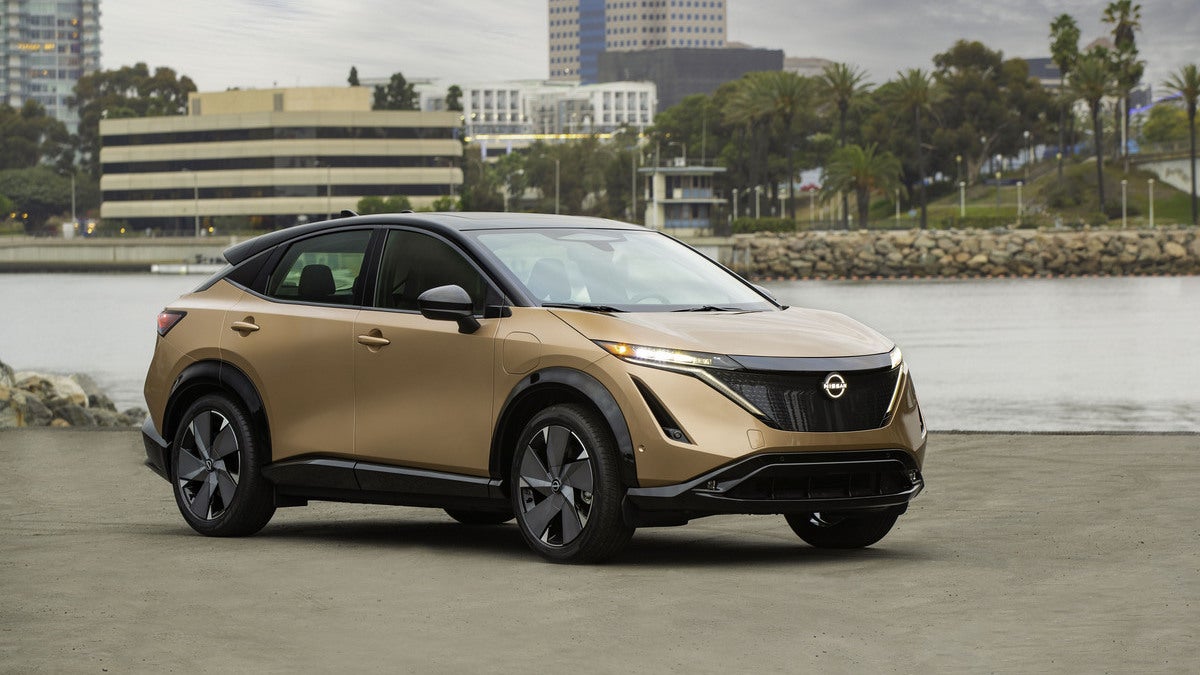Nestled in the heart of California’s high-tech Silicon Valley is the Alliance Innovation Lab, where Nissan, Renault, and Mitsubishi work in partnership. The center is a cradle-to-concept lab for projects related to energy, materials, and smart technologies in cities, all with an eye toward automotive autonomy.
Maarten Sierhuis, the global director of the laboratory, is both exuberant and realistic about what Nissan has to offer as electric and software-driven vehicles go mainstream. And it’s not the apocalyptic robot-centric future portrayed by Hollywood in movies like Minority Report.
“Show me an autonomous system without a human in the loop, and I’ll show you a useless system,” Sierhuis quips to PopSci. “Autonomy is built by and for humans. Thinking that you would have an autonomous car driving around that never has to interact with any person, it’s kind of a silly idea.”
Lessons from space
Educated at The Hague and the University of Amsterdam, Sierhuis is a specialist in artificial intelligence and cognitive science. For more than a dozen years, he was a senior research scientist for intelligent systems at NASA. There, he collaborated on the invention of a Java-based programming language and human behavior simulation environment used at NASA’s Mission Control for the International Space Station.
Based on his experience, Sierhuis says expecting certain systems to fail is wise. “We need to figure there is going to be failure, so we need to design for failure,” he says. “Now, one way to do that—and the automotive industry has been doing this for a long time—is to build redundant systems. If one fails, we have another one that takes over.”
One vein of research has Nissan partnering with the Japan Aerospace Exploration Agency (JAXA) to develop an uncrewed rover prototype for NASA. Based on Nissan’s EV all-wheel drive control technology (dubbed e-4ORCE) used on the brand’s newest EV, Ariya, the rover features front and rear electric motors to navigate challenging terrain.
Sierhuis calls the Ariya Nissan’s most advanced vehicle to date. It is a stepping stone toward combining all the technology the lab is working on in one actual product. He and the team have switched from using a Leaf to an Ariya for its hands-on research, even simulating lunar dust to test the system’s capabilities in space.
‘There is no autonomy without a human in the loop’
There is an air of distrust of autonomous technology from some car buyers, amplified by some high-profile crashes involving Tesla’s so-called “Full Self-Driving” vehicles.
“It’s hard for OEMs to decide where and how to bring this technology to market,” Sierhuis says. “I think this is part of the reason why it’s not there yet, because is it responsible to go from step zero or step one to fully autonomous driving in one big step? Maybe that’s not the right way to teach people how to interact with autonomous systems.”
From the lab team’s perspective, society is experiencing a learning curve and so the team is ensuring that technology is rolled out gradually and responsibly. Nissan’s approach is to carefully calibrate its systems so the car doesn’t take over. Computing is developed for people, and the people are at the center of it, Sierhuis says, and it should always be about that. That’s not just about the system itself; driving should still be fun.
“There is no autonomy without a human in the loop,” he says. “You should have the ability to be the driver yourself and maybe have the autonomous system be your co-driver, making you a better driver, and then use autonomy when you want it and use the fun of driving when you want it. There shouldn’t be an either-or.”
The Ariya is equipped with Nissan’s latest driver-assist suite, enhanced by seven cameras, five millimeter-wave radars and 12 ultrasonic sonar sensors for accuracy. A high-definition 3-D map predicts the road surface, and on certain roads, Nissan says the driver can take their hands off the wheel. That doesn’t mean a nap is in order, though; a driver-attention monitor ensures the driver is still engaged.
New driver assistance technologies raise questions about the relationship between technology and drivers-to-be: What if someone learns how to drive with a full suite of autonomous features and then tries to operate a car that doesn’t have the technology; are they going to be flummoxed? Ultimately, he says, this is a topic the industry hasn’t fully worked through yet.
Making cities smarter
The Alliance Innovation Lab is also studying the roads and cities where EVs operate. So-called “smart cities” integrate intelligence not just into the cars but into the infrastructure, enabling the future envisioned by EV proponents. Adding intelligence to the environment means, for example, that an intersection can be programmed to interface with a software-enabled vehicle making a right-hand turn toward a crosswalk where pedestrians are present. The autonomous system can alert the driver to a potentially dangerous situation and protect both the driver and those in the vicinity from tragedy.
Another way to make cities smarter is by improving the efficiency of power across the board. According to the Energy Information Administration (EIA), the average home consumes about 20 kilowatt-hours per day. Nissan’s new Ariya is powered by an 87-kilowatt battery, which is enough to power a home for four days. Currently, Sierhuis says, we have a constraint optimization problem: car batteries can store a fantastic amount of power that can be shared with the grid in a bi-directional way, but we haven’t figured out how to do that effectively.
On top of that, car batteries use power in larger bursts than inside homes, and the batteries have limited use before they must be retired. However, that doesn’t mean the batteries are trash at that point; on the contrary, they have quite a bit of energy potential in their second life. Nissan has been harnessing both new and used Leaf batteries to work in tandem with a robust solar array to power a giant soccer stadium (Johan Cruijff Arena) in Amsterdam since 2018. In the same year, Nissan kicked off a project with the British government to install 1,000 vehicle-to-grid charging points across the United Kingdom. It’s just a taste of what the brand and its lab see as a way to overcome infrastructure issues erupting around the world as EVs gain traction.
Combining EV batteries and smart technology, Nissan envisions a way for vehicles to communicate with humans and the grid to manage the system together, in space and here on Earth.



